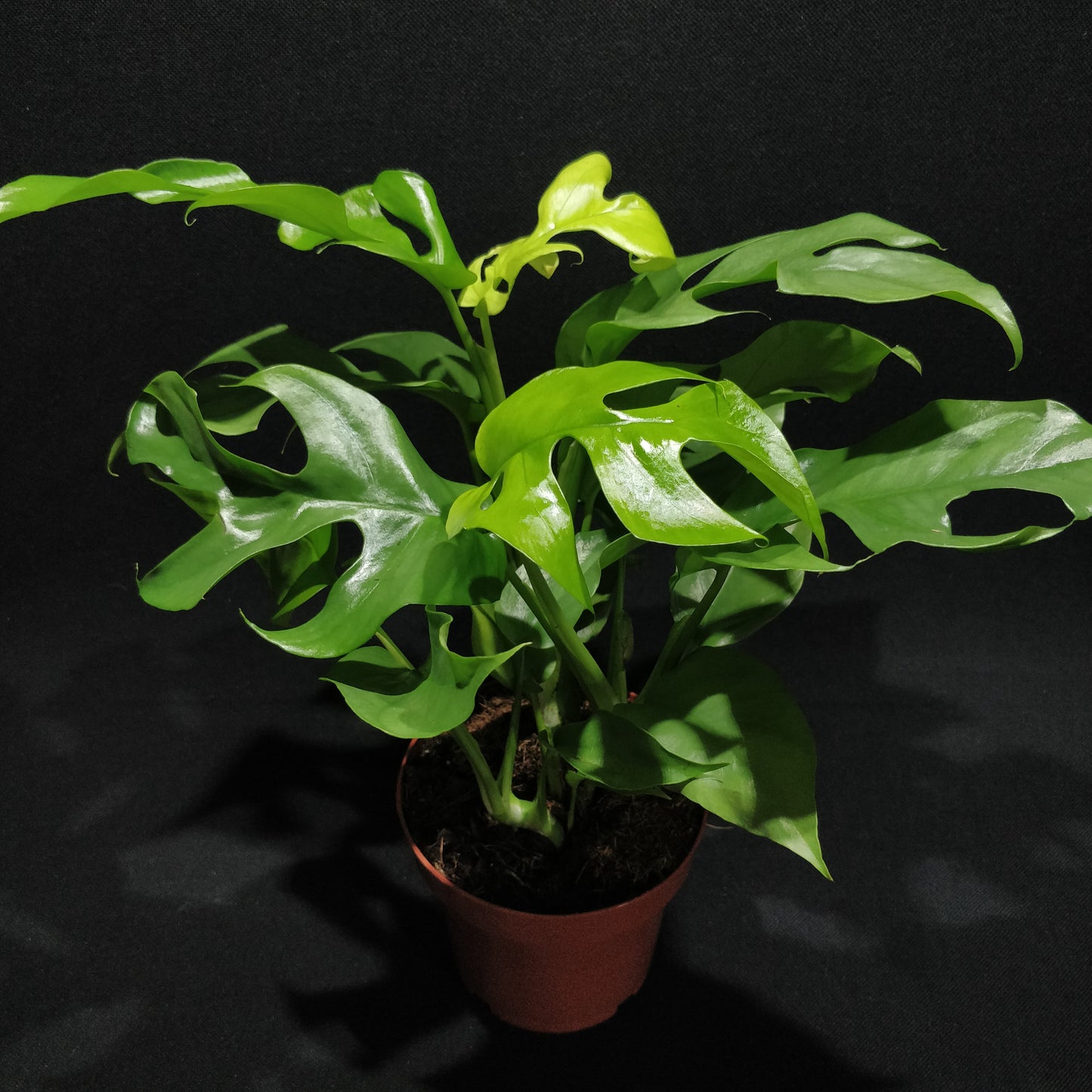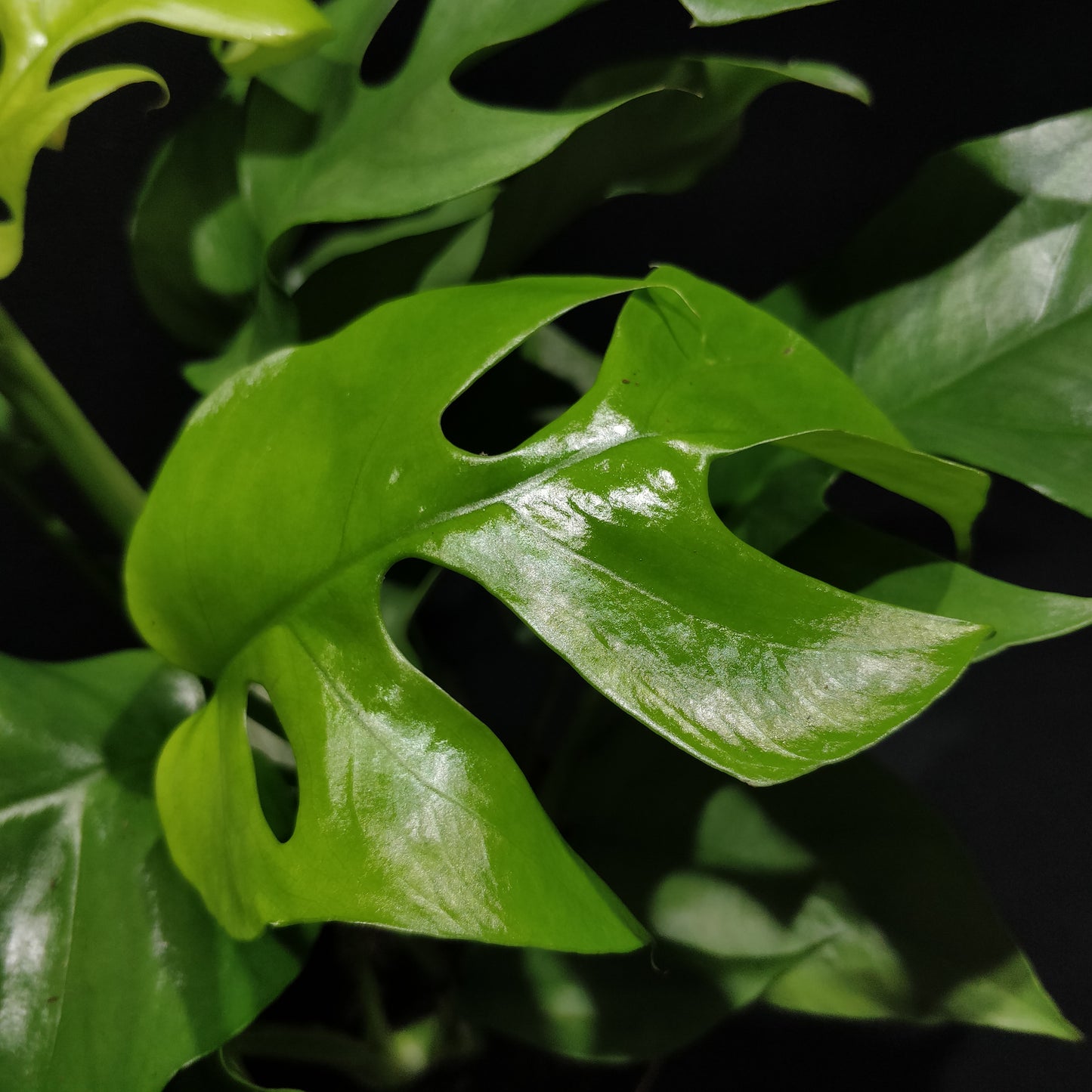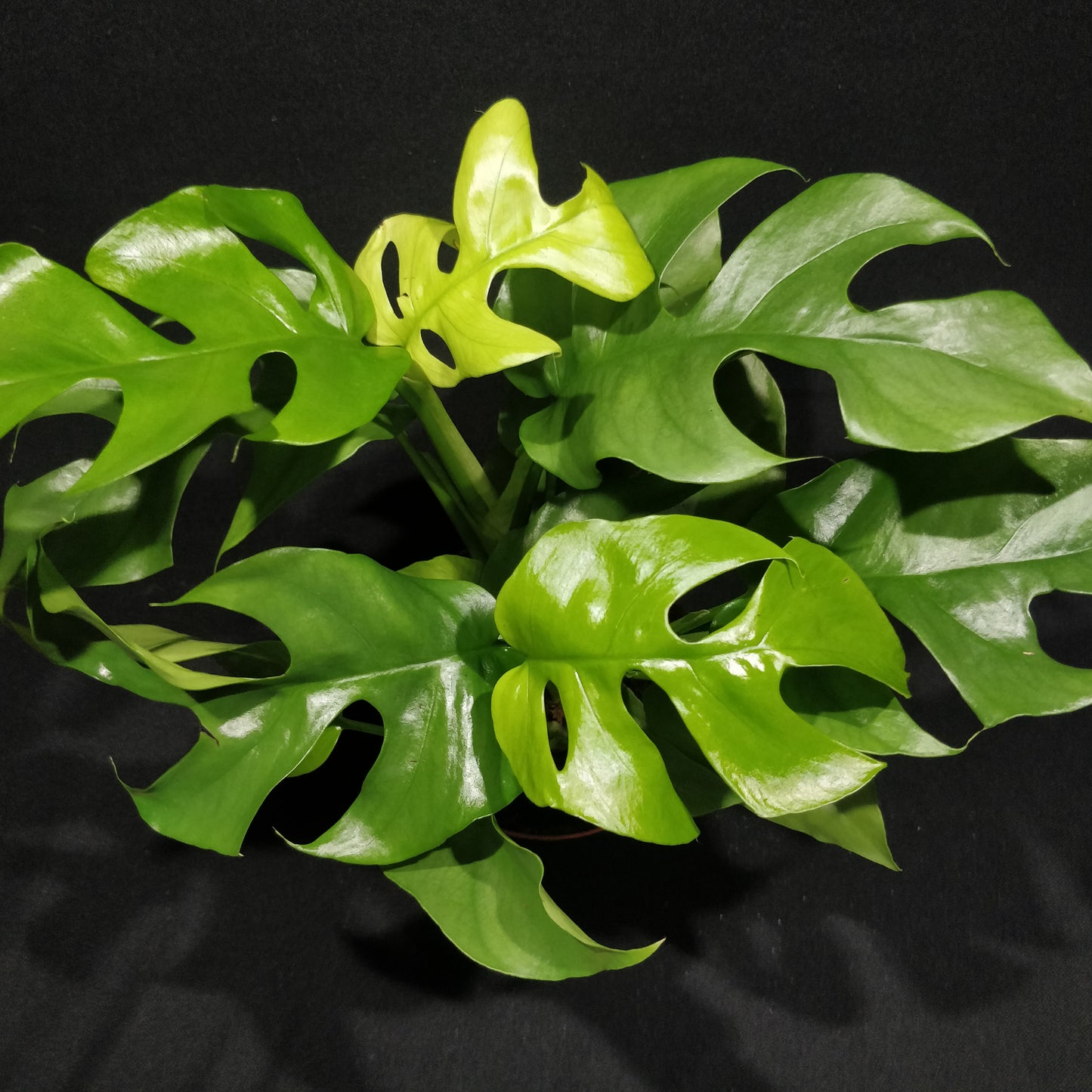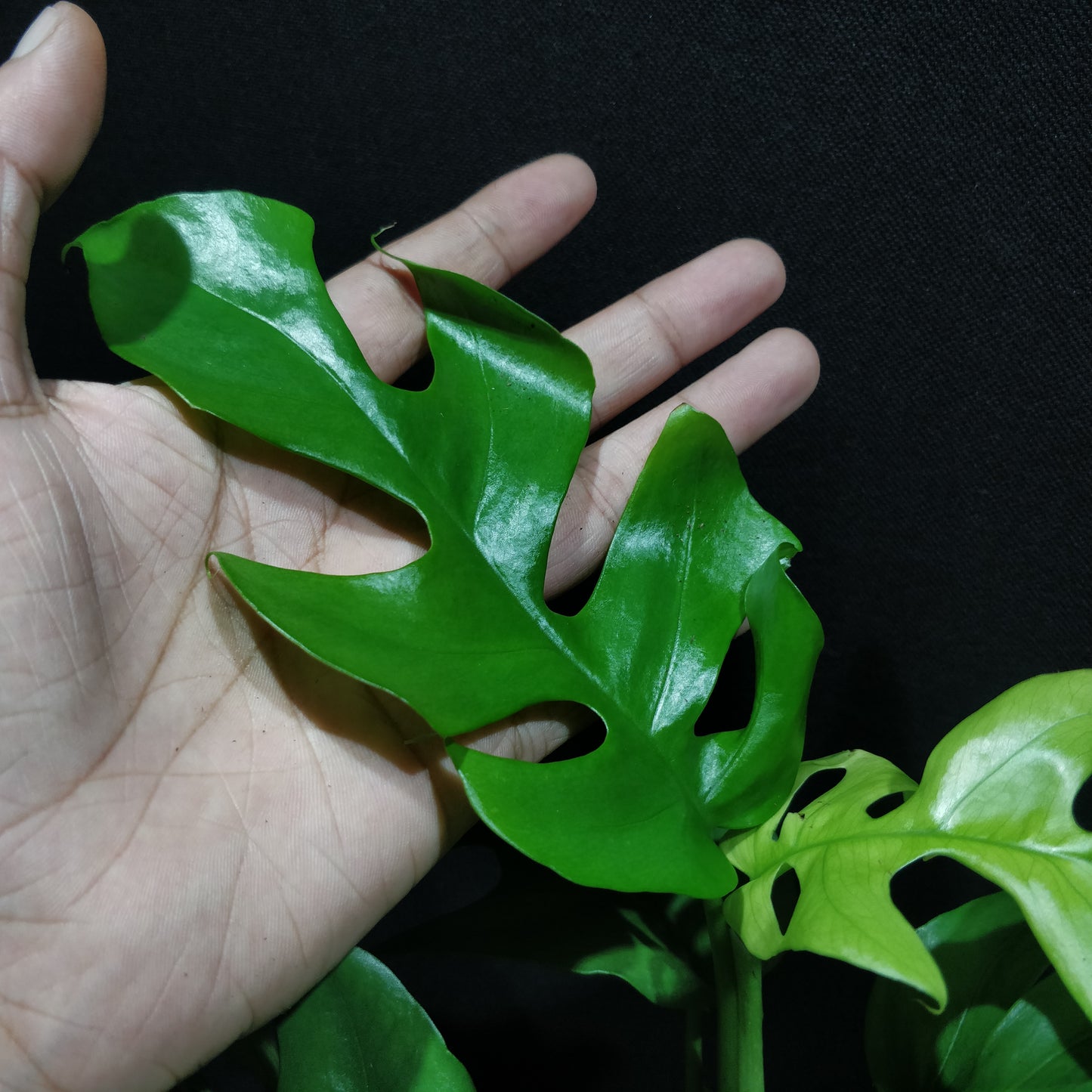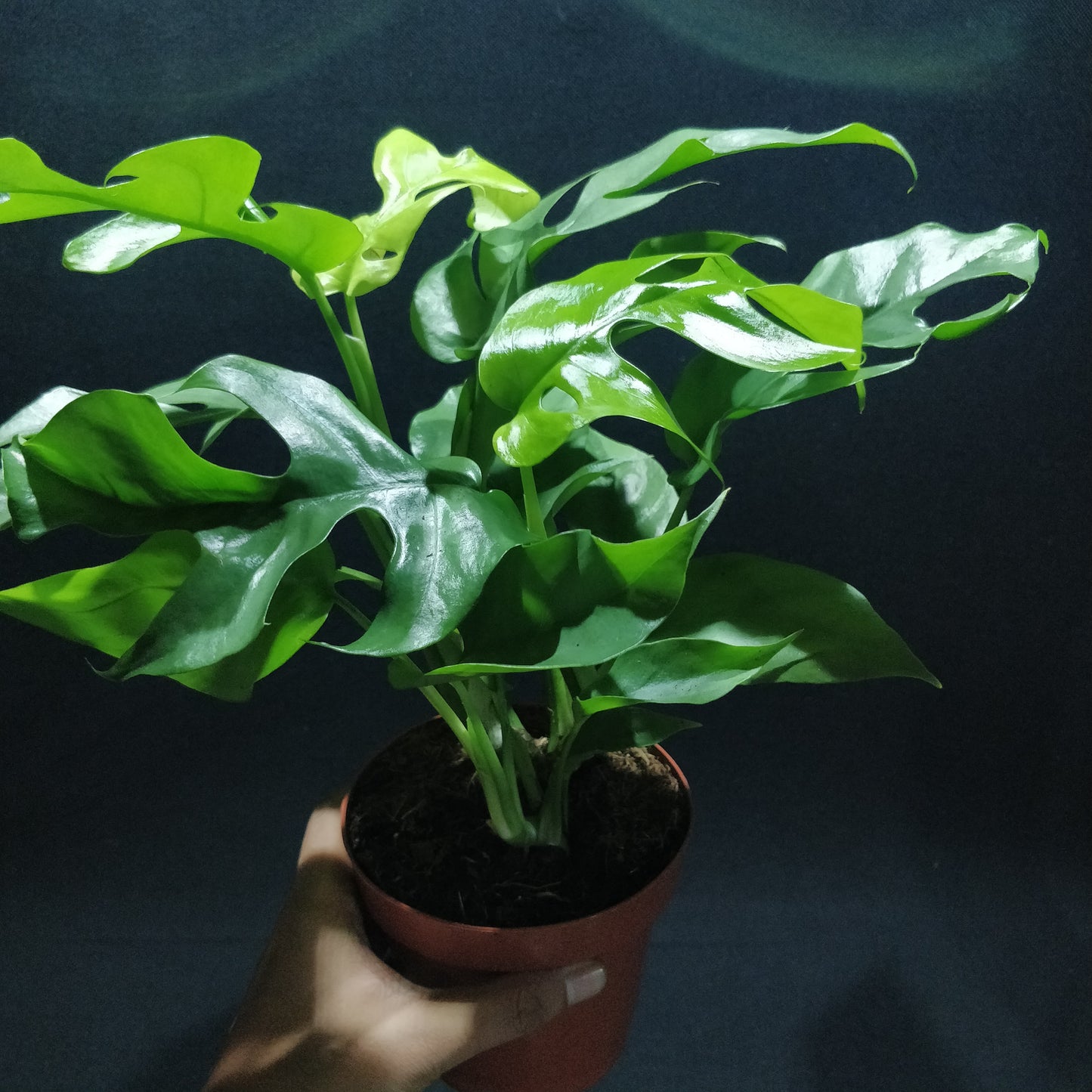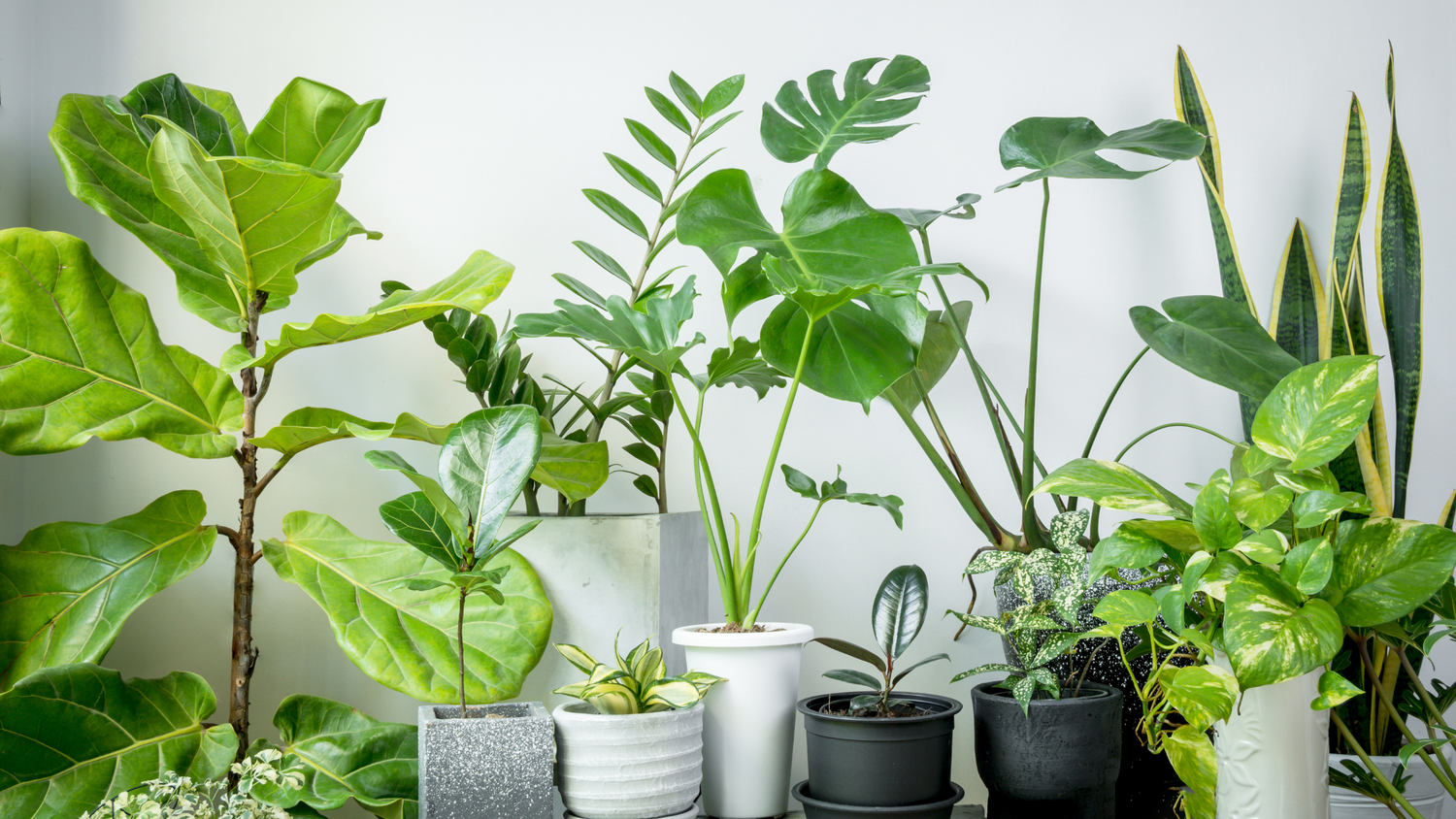Mini Monstera - Rhaphidophora Tetrasperma
Mini Monstera - Rhaphidophora Tetrasperma
Out of stock
Couldn't load pickup availability
The Rhaphidophora tetrasperma, also known as the mini monstera or philodendron minima, is a popular houseplant known for its unique, fenestrated leaves and easy care. It is a fast-growing vining plant that can reach up to 12 feet tall when given the right conditions. However, it is also easy to maintain in a smaller pot, making it an ideal choice for those who want a low-maintenance plant that still makes a statement.
Scientific classifications:
- Kingdom: Plantae
- Division: Magnoliophyta
- Class: Liliopsida
- Order: Alismatales
- Family: Araceae
- Genus: Rhaphidophora
- Species: R. tetrasperma
Care instructions:
- Light: The Rhaphidophora tetrasperma prefers bright, indirect light. Avoid placing the plant in direct sunlight, as this can scorch the leaves.
- Water: The Rhaphidophora tetrasperma is moderately drought-tolerant and does not need to be watered often. Allow the top inch of soil to dry out between waterings.
- Temperature: The Rhaphidophora tetrasperma prefers warm temperatures between 18 and 25 degrees Celsius. It can tolerate cooler temperatures, but it may go dormant if the temperature drops below 10 degrees Celsius.
- Soil: The Rhaphidophora tetrasperma prefers a well-draining potting mix. You can use a commercial potting mix or make your own by mixing equal parts potting soil, perlite, and sand.
- Fertilizer: Fertilize the Rhaphidophora tetrasperma once a month during the spring and summer months with a balanced liquid fertilizer. Do not fertilize during the fall and winter months.
Troubleshooting:
- Yellowing leaves: Yellowing leaves can be a sign of overwatering, underwatering, or too much direct sunlight. Check the soil moisture and move the plant to a different location if necessary.
- Drooping leaves: Drooping leaves can be a sign of underwatering or root rot. If the soil is dry, water the plant thoroughly. If the soil is wet, it is likely that the plant has root rot. Remove the plant from its pot and trim away any dead or dying roots. Replant the plant in fresh potting mix.
- Pests and diseases: The Rhaphidophora tetrasperma is relatively resistant to pests and diseases. However, it is important to inspect your plant regularly for any signs of pests or diseases. If you see any pests, treat them immediately with an insecticidal soap or neem oil spray.
Tips:
- The Rhaphidophora tetrasperma is a vining plant, so it will need support as it grows. You can provide support by using a trellis, moss pole, or hanging basket.
- The Rhaphidophora tetrasperma can be propagated by stem cuttings. To propagate, simply cut a stem from the plant and place it in water or a moist potting mix. The stem will root within a few weeks.
- The Rhaphidophora tetrasperma is a non-toxic plant, but it is important to note that the sap can be irritating to the skin and eyes. If you come into contact with the sap, wash the affected area immediately with soap and water.
The Rhaphidophora tetrasperma is a beautiful and easy-to-care-for houseplant that is perfect for beginners and experienced plant enthusiasts alike. With proper care, your Rhaphidophora tetrasperma can thrive for many years to come.
Scientific Classification
Scientific Classification
Order: Alismatales
Family: Araceae
Genus: Rhaphidophora
